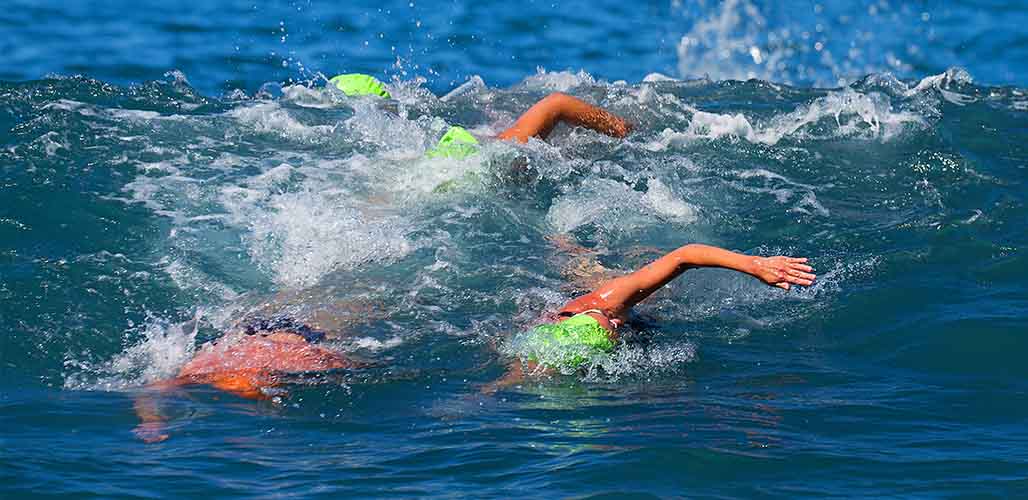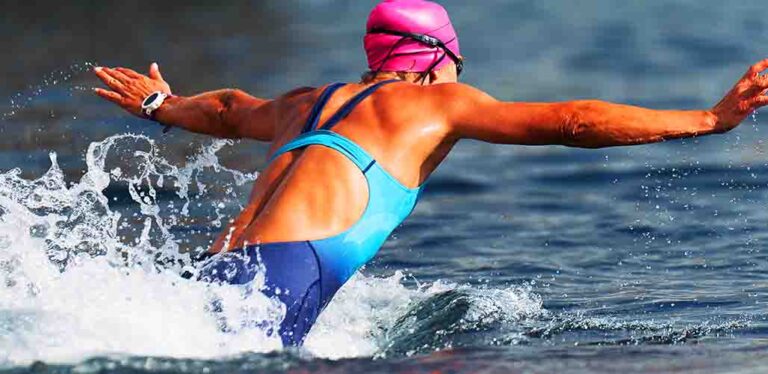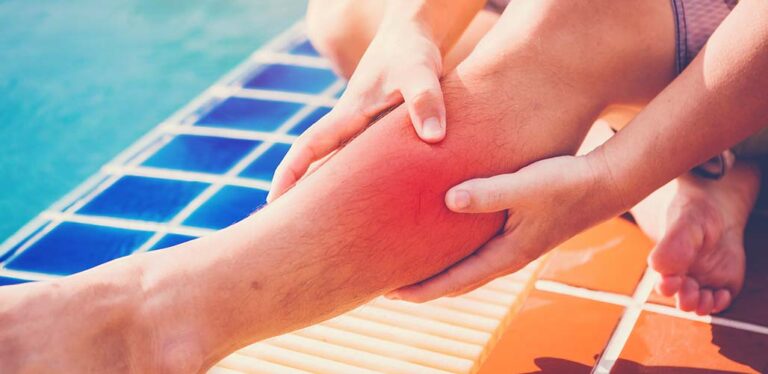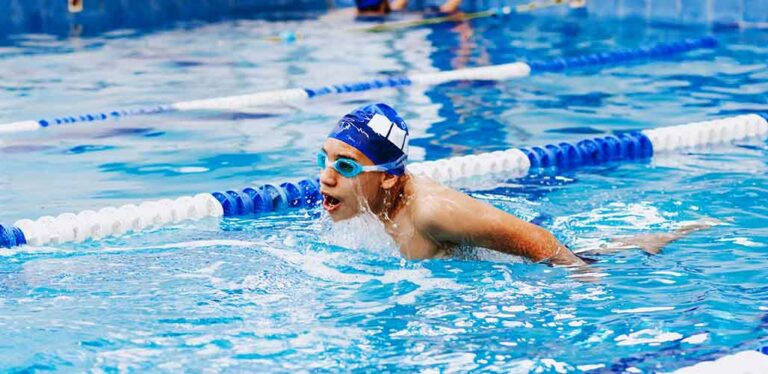How Many People Know How To Swim?
How many people know how to swim in the country where you live? What about worldwide? Learning to swim was something I took for granted during my childhood, but when the time came for me to arrange swimming lessons for my own daughter, I realized I didn’t know if it was a common experience or not. Obviously, estimating how many people can swim worldwide isn’t straightforward. But, since the answer is important at a local level for protecting people against drowning, lots of attempts have been made to work it out.
Contents
- How many people know how to swim?
- Worldwide figures vs local statistics
- How important is being able to swim?
- What is the best age to learn?
How many people know how to swim?
If you thought this was a straightforward question, think again! As the Red Cross have discovered, before you can estimate how many people know how to swim, first you need to agree what amounts to being able to swim. Is being able to get to the edge of a pool if you fall in enough? Or is there a minimum distance you need to be able to cover? Does doggy paddle count?
In order to achieve some common understanding of what being able to swim means, in 2015 the Red Cross proposed five basic skills which make up what they call ‘water competency’:
- Entering water which comes right up over their head at first (total immersion).
- Returning to the surface and floating or treading water for at least 1 minute.
- Turning 360° in the water to locate an exit point, and holding position facing it.
- Switching to a horizontal position in the water, and swimming in a front or back position for at least 25 yards.
- Getting out of the water again, without a ladder.
Not all research since then has used this definition to determine who can swim and who can’t. But some has, and it’s a useful concept to have in mind.
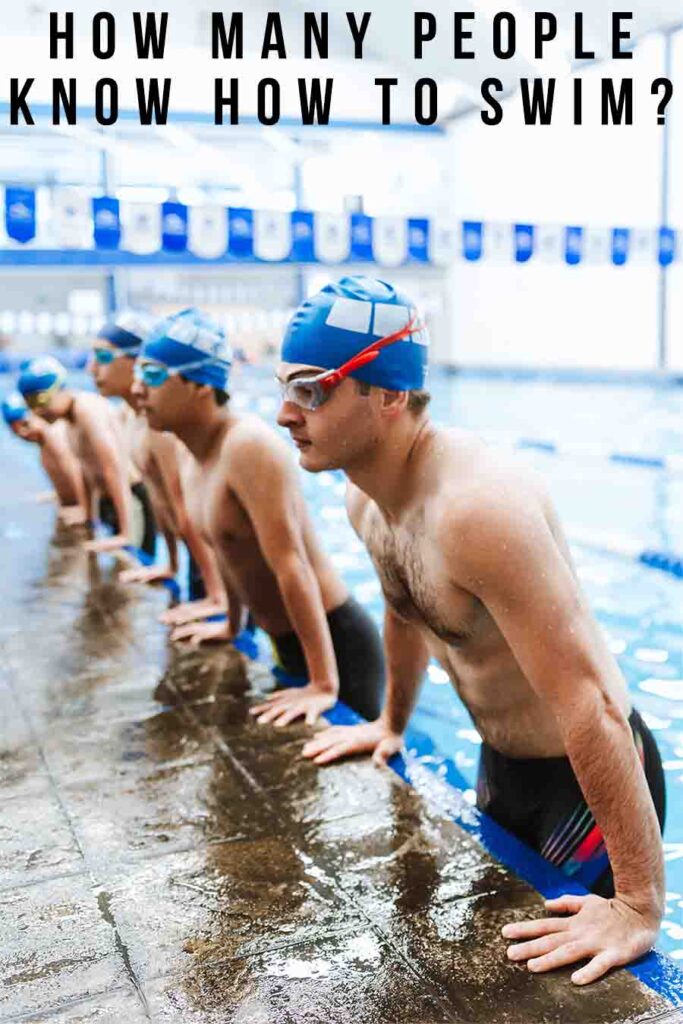
Worldwide figures vs local statistics
In 2019, a survey of 150,000 people across 142 countries conducted on behalf of the Lloyd’s Register Foundation World Risk Poll found that 55% of people over 15 years old cannot swim unassisted. Based on some crude estimates of world population size and age distribution, this means that approximately 2.7 billion people over 15, plus an unknown proportion of children, can swim. Out of a total of 8 billion people on Earth.
However, information about 150,000 respondents – despite being a lot of data to gather and interpret – still only represents 0.000002% of the population. So, it’s hard to say how accurate these numbers really are. What’s more, global figures can disguise huge variations in swimming ability at a local level. So, here are some examples of recent statistics about how many people can swim, collected at national levels:
| America | 54% of all Americans either can’t swim or don’t have all 5 of the basic swimming skills described by the Red Cross1. |
| Australia | 80% of beach goers reported poor swimming ability2. |
| Denmark | 79% of children and 66% of adults can swim3. |
| England | 69% of adults can swim at least 27 yds4. |
| Finland | 72% of children and 68% of adults5. |
| Germany | 85.5% of 5 to 17 year olds have some swimming ability6. |
| Iceland | 95% of children and 96% of adults can swim7. |
| Lithuania | 82% of adults say they know how to swim, but only 22% would be able to comfortably swim for 27 yds8. |
| Norway | 50% of children can swim9. |
| Sweden | 92% of children can swim10. |
| Thailand | 19% of children age 6-12 years old can swim11. |
The impact of ethnicity, income and sex
Where someone lives isn’t the only factor that changes the likelihood of them knowing how to swim.
For example, in one study 69% of African Americans said they can swim, and just 33% were confident they can perform all five of the Red Cross’ basic water skills. Meanwhile, 84% of white Americans said they could swim, and 69% reported that they could perform all five basic water skills. In another survey, 32% of white Americans assessed their swimming ability as being ‘limited’, whilst 44% of Hispanic people and 62% of African American respondents described their swimming ability as limited.
The swimming ability of a population is also connected to national wealth. In low income economies, only 27% of people say they can swim, on average. But this rises to 38% of people in middle income economies, and 76% of people in high-income economies.
And finally, in every part of the world, men are significantly more likely to be able to swim than women. The sex divide is most pronounced in Central Asia, the Caribbean, South East Asia, and North Africa, and it is least pronounced in Australia, New Zealand, and North and West Europe. Worldwide, approximately 32% of women over 15 years old (960 million women) and 57% of men over 15 years old (1.7 billion men) say they are able to swim.
How important is being able to swim?
So in a world where more people can’t swim than can, how much does it matter? Tragically, the World Health Organization estimates that 236,000 deaths are caused by drowning every year. Which makes it the 3rd most common cause of accidental-injury deaths, after traffic accidents and falls. How many of those people would be saved if more people learned how to swim?
The answer to this surprised me! Firstly, it ought to be noted that most drowning victims are under 4 years old. In these cases, better safety precautions (such as fencing off pools and ponds) would be more effective than trying to teach a life-saving standard of swimming.
But secondly, and most intriguingly, the evidence that knowing how to swim reduces the probability of death by drowning is inconclusive. Some research suggests that countries with overall higher swimming ability do have lower drowning rates. But other studies have failed to find a significant connection.
How is this so?
Well it boils down to perception of risk. Someone who knows how to swim is less likely to drown if they fall into a swimming pool than someone who doesn’t. But, they are more likely than a non-swimmer to take part in risky activities like tombstoning (jumping from cliffs or high platforms into water) or jumping into a reservoir to cool off on a hot day. Activities like these don’t just rely on swimming ability, they also require understanding of things like:
- The possibility of hidden objects in the water
- How much harder it is to swim in open water
- Tides
- How much weight clothes add
- The shock effect of jumping into cold water
Which unfortunately a lot of people who engage in these activities don’t understand at all. So, the net effect is that drowning deaths among people who can swim occur at about the same frequency as among those who can’t. However, these are population statistics – at a personal level, it’s still a really good idea to learn to swim (and learn how to make safe decisions about getting into water!)
What is the best age to learn?
Research suggests that the optimum age to start swimming lessons is between 5 and 7 years old. This is a sweet spot where kids are old enough to follow tuition and apply themselves to the task of learning, but when they still relax easily in the water. As we get older, we are much more likely to tense up in the pool, which makes learning to swim harder. But, it’s never too early or too late to start enjoying the water safely or learn how to swim! Here at The Swimming Site, we certainly wouldn’t want anyone to ever think it’s too late to learn and enjoy swimming. So if you don’t know how to swim already, the best time to learn is now!
How many people know how to swim? Summary
World wide, about 45% of adults (about 2.7bn people) know how to swim, but there is a high degree of variance between different countries. Economic prosperity is closely correlated with how many people know how to swim in any given country. Within countries, ethnicity and sex are also significant predictors of how likely someone is to be able to swim.
Do any of the statistics in this article surprise you? Let us know what you think in the comments section down below!

